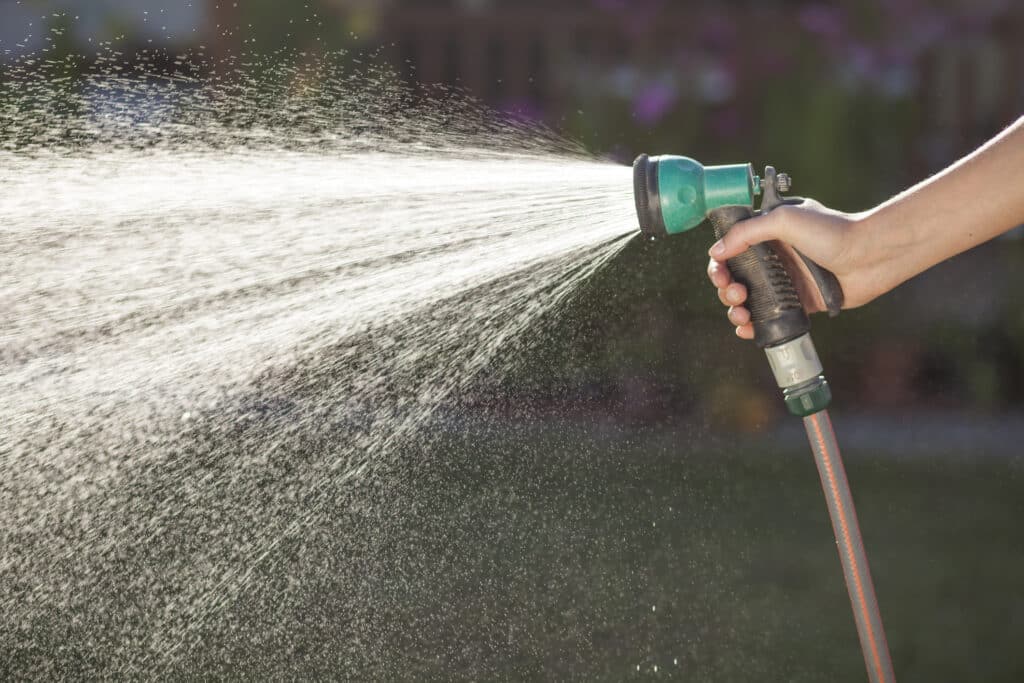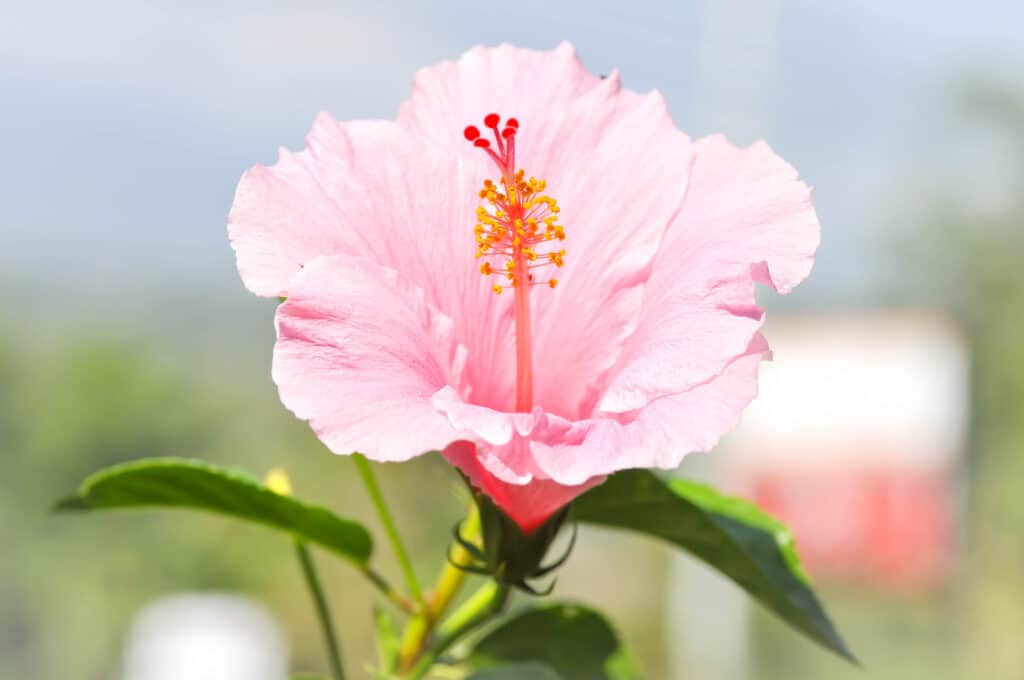Have you ever noticed those bright, colorful flowers blooming all over Hawaii? Chances are, you’re looking at Hau Hele (Hibiscus rosa-sinensis), one of the most beloved ornamental plants in the islands.
Also known as Chinese Hibiscus or Tropical Hibiscus, this stunning flower is a staple in Hawaiian landscapes, adding a splash of tropical beauty to gardens, parks, and even roadsides.
Hau Hele Details
Hau Hele is a fast-growing, evergreen shrub that thrives in Hawaii’s warm and humid climate.It typically grows between 4 to 10 feet tall, though some varieties can become even taller with proper care.
Its dark green, glossy leaves create a striking contrast against its bright, eye-catching flowers.This plant blooms year-round in Hawaii, ensuring a steady display of color in gardens and landscapes.
Due to its resilience and beauty, Hau Hele is a popular choice for homeowners and landscapers across the islands.

Varieties and Cultivars
Hau Hele has many varieties and cultivars, each offering unique colors, petal shapes, and growth habits.
Some of the most popular varieties found in Hawaii include:
- ‘Red Dragon’ – This cultivar is known for its deep red, velvety petals that create a bold and dramatic look. It is a favorite for adding contrast to gardens and works well as a focal point in landscaping.
- ‘Yellow King’ – With its bright golden-yellow blooms, this variety brings a cheerful and tropical vibe to any space. It thrives in full sun and produces flowers almost year-round in Hawaii.
- ‘Pink Champagne’ – This delicate variety features soft pink petals with ruffled edges, giving it an elegant and romantic appeal. It is commonly used in decorative hedges and garden borders.
- ‘Orange Sunset’ – Named for its fiery orange petals with a deep red center, this hibiscus resembles the warm hues of a Hawaiian sunset. It is a great choice for tropical-themed gardens.
- ‘White Angel’ – A rare but stunning variety, ‘White Angel’ showcases pure white flowers with a slight yellow center. It adds a soft, classic look to landscapes and pairs well with other brightly colored hibiscus varieties.
Many of these cultivars are well-suited to Hawaii’s warm, humid climate and can thrive with minimal care. Whether planted as hedges, in containers, or as standalone ornamental pieces, Hau Hele varieties bring a touch of tropical elegance to any garden.
Best Time to Plant
Year-Round Planting Feasibility
Since Hawaii has a consistently warm climate, Hau Hele can be planted at any time of the year.
Unlike mainland regions with distinct seasons, Hawaii’s tropical weather allows this hibiscus to establish itself whenever soil and moisture conditions are right.
As long as the plant receives adequate water and sunlight, it will thrive regardless of the month it is planted.
Ideal Planting Seasons in Hawaii
While Hau Hele can be planted year-round, the best time to plant is typically during the early wet season.
Planting in the wet season (from November to March) allows the young hibiscus to benefit from natural rainfall, reducing the need for frequent manual watering.
For those planting during the drier months (April to October), regular irrigation is necessary to prevent stress and ensure strong root establishment.
By choosing the right time and providing proper care, Hau Hele will quickly grow into a vibrant, flowering shrub that enhances any Hawaiian landscape.
Growing Conditions
Ideal Soil Types and pH Levels
Hau Hele grows best in well-draining, nutrient-rich soil with a pH between 6.0 and 7.0.
Sandy or loamy soils allow excess water to drain, preventing root rot and other fungal diseases.
Adding organic compost or mulch improves soil fertility while helping retain the right amount of moisture.
Heavy clay soil should be avoided unless amended with sand or perlite for better drainage.
Light Requirements
This hibiscus prefers full sun, requiring at least 6 to 8 hours of direct sunlight each day.
Although it can tolerate partial shade, too much shade can result in fewer flowers and weaker growth.
For best results, plant Hau Hele in an open area with plenty of sunlight to encourage bigger, more colorful blooms.
If growing indoors or in a shaded location, placing the plant near a bright, sunny window can help it thrive.
Temperature and Humidity Preferences
Hau Hele thrives in Hawaii’s warm temperatures, ideally between 65°F and 85°F.
It can tolerate hot, humid conditions, making it a reliable plant for tropical gardens.
This plant also does well in coastal environments, as many cultivars are resistant to salt spray and wind.
However, prolonged exposure to strong winds can cause damage, so planting in a sheltered location is ideal.
With the right temperature and humidity, Hau Hele will stay healthy and vibrant all year long.
Moisture Needs
Consistent watering is essential, but overwatering should be avoided to prevent root rot.
Watering 2 to 3 times per week is usually enough, though more frequent watering may be needed in hot, dry months.
Applying a layer of mulch around the base helps retain moisture and prevent the soil from drying out too quickly.
Hau Hele prefers evenly moist soil, but it should never be left in standing water.
By maintaining the right moisture levels, this plant will produce strong roots, healthy leaves, and continuous flowers.
Planting Instructions
Proper planting is essential to help Hau Hele establish strong roots and grow into a healthy, flowering shrub.
By following the right steps and considering factors like soil drainage, spacing, and watering, you can ensure successful growth.
Step-by-Step Guide
Following a proper planting process will give Hau Hele the best start for long-term health and flowering.
- Choose the Right Location – Select a spot with full sun and well-draining soil to encourage healthy growth. A bright and open space will ensure the plant gets enough sunlight to produce abundant flowers.
- Prepare the Soil – Loosen the soil and mix in organic compost to improve nutrients and moisture retention. This will create a fertile growing environment that supports strong root development.
- Dig the Hole – Make a hole twice as wide as the root ball but no deeper than the plant’s current depth. A properly sized hole allows the roots to spread easily and establish themselves.
- Place the Plant – Gently remove the hibiscus from its pot, loosen the roots, and set it in the hole at ground level. Be careful not to bury the plant too deep, as this can lead to root rot.
- Fill and Water – Backfill with soil, lightly press down, and water thoroughly to remove air pockets. Proper watering at this stage helps the roots settle and begin absorbing nutrients.
By following these steps, Hau Hele will adapt quickly and start thriving in its new home.
Tips for Successful Establishment
Once planted, Hau Hele needs the right care and environment to ensure steady growth and continuous flowering.
- Water deeply but infrequently – This encourages strong root growth, especially during the first few weeks. Overwatering can cause root rot, so it’s best to let the soil dry slightly between waterings.
- Ensure proper spacing – Leave at least 3 to 5 feet between plants to allow for full growth and air circulation. Adequate spacing prevents overcrowding, which can lead to fungal diseases.
- Use mulch – Adding a layer of organic mulch around the base helps retain moisture and regulate soil temperature. Mulching also suppresses weeds, keeping the area around the plant clean and healthy.
- Avoid fertilizing too soon – Wait about 2 to 3 weeks after planting before applying a balanced fertilizer. Giving the plant time to settle before adding nutrients prevents stress and encourages natural growth.
- Protect from strong winds – If planting in an exposed area, consider using a windbreak to prevent damage to young plants. Coastal winds can be harsh, so shielding new hibiscus plants helps them grow stronger.
By following these tips, Hau Hele will develop into a strong, healthy plant with abundant flowers year-round.

Care and Maintenance
Watering Needs
Consistent watering is essential to keep Hau Hele hydrated and thriving in Hawaii’s warm climate.
It’s best to water deeply but avoid overwatering, as too much moisture can cause root rot and plant stress.
During Hawaii’s dry season (April to October), the plant may require more frequent watering to prevent the soil from drying out too quickly.
A layer of mulch around the base helps retain moisture, keeping the soil cool and reducing the need for constant watering.
Fertilization Recommendations
Regular fertilization helps Hau Hele produce more flowers and stronger growth throughout the year.
A high-potassium fertilizer is ideal for promoting flowering, while a balanced mix of nitrogen and phosphorus supports overall plant health.
Applying fertilizer once a month will keep the plant nourished and blooming, but over-fertilizing can lead to excessive leaf growth rather than flowers.
Watering after fertilizing helps the nutrients absorb into the soil and prevents any risk of burning the roots.
Pruning Guidelines
Pruning is essential to keep Hau Hele neat, compact, and continuously blooming.
Trimming dead, weak, or overgrown branches encourages new growth and redirects energy toward healthier parts of the plant.
The best time to prune is after a bloom cycle, as this stimulates the plant to produce more buds and flowers.
Light pruning helps maintain a fuller, bushier shape, preventing the plant from becoming too leggy or sparse.
Common Problems and Solutions
Even though Hau Hele is a hardy and resilient plant, it can still face certain issues, especially in Hawaii’s humid climate.
Common problems include pest infestations, fungal diseases, and environmental stress, which can affect the plant’s health and flowering.
Common Pests
Like many tropical plants, Hau Hele is susceptible to pests that feed on its leaves, stems, and flowers.
- Aphids – These tiny insects cluster on new growth, sucking plant juices and causing distorted leaves and weak stems. They also attract ants, which can worsen infestations.
- Whiteflies – Small, white-winged insects that feed on the plant and leave behind a sticky residue called honeydew, which can encourage mold growth.
- Spider Mites – These microscopic pests thrive in dry conditions, causing yellowing leaves and fine webbing on the undersides of foliage.
- Mealybugs – Cotton-like white pests that suck sap from the plant, leading to stunted growth and yellowing leaves.
Regularly spraying the plant with a strong stream of water or using natural insecticidal soap can help keep these pests under control.
Common Diseases
Hau Hele is generally disease-resistant, but certain fungal infections can develop in Hawaii’s warm, moist climate.
- Leaf Spot – Appears as dark brown or yellow spots on leaves, which can spread quickly if not treated. Pruning affected leaves and improving air circulation helps prevent this.
- Root Rot – Caused by overwatering or poor drainage, leading to wilting, yellowing, and decaying roots. Using well-draining soil and avoiding waterlogged conditions can prevent this.
- Powdery Mildew – Forms a whitish, powder-like coating on leaves, especially during humid conditions. It weakens the plant over time and can be controlled with proper spacing and air circulation.
- Rust Fungus – Creates orange or reddish-brown spots on leaves, often due to excessive moisture. Removing affected leaves and avoiding overhead watering can help stop its spread.
While these diseases can weaken Hau Hele, they are manageable with good plant care, proper watering, and early treatment.
By maintaining a clean growing environment and monitoring for signs of disease, you can ensure your hibiscus stays strong and beautiful year-round.
Preventative Measures and Treatments
Keeping Hau Hele healthy starts with preventative care and quick treatment when issues arise.
Regularly inspecting the plant for pests and diseases allows for early intervention, reducing the chances of serious damage.
Using organic solutions like neem oil or insecticidal soap helps control pests without harming beneficial insects.
Proper watering techniques, such as watering at the base of the plant instead of overhead, can minimize the risk of fungal infections.
With these simple practices, Hau Hele will stay strong, disease-free, and full of stunning tropical blooms.
Uses and Landscaping Tips
Landscaping Uses
Hau Hele’s ability to thrive in Hawaii’s warm, humid climate makes it perfect for various landscape designs.
Many homeowners use it as a natural hedge, as its dense foliage creates a beautiful privacy screen or wind barrier.
As a standalone feature, Hau Hele works well in garden beds or near entryways, where its colorful blooms serve as a focal point.
For small spaces, it grows well in containers and pots, making it a great choice for lanais, patios, and balconies.
Some varieties are also salt-tolerant, making them ideal for coastal gardens where they can withstand wind and salty air.
Companion Planting Ideas
Pairing Hau Hele with the right plants can enhance its beauty and create a more balanced garden.
Plumeria is a great companion because its fragrant, delicate flowers contrast beautifully with Hau Hele’s bold, colorful blooms.
The Ti plant, with its deep red or purple leaves, adds texture and variety to the garden, complementing the hibiscus’s green foliage.
Bird of Paradise is another excellent choice, as its unique tropical flowers blend perfectly with Hau Hele’s exotic appeal.
Adding ferns or ground covers beneath Hau Hele helps retain soil moisture and create a lush, layered effect in the landscape.
Propagation Methods
Propagation from Cuttings
Growing Hau Hele from cuttings is the most common and reliable method for home gardeners.
A 6 to 8-inch stem cutting from a healthy plant should be selected, ensuring it has at least two to three leaf nodes.
The cutting should be placed in moist, well-draining soil or water until roots begin to develop, usually within four to six weeks.
Air Layering and Grafting
Air layering is a great method for creating strong, self-sustaining plants while still attached to the parent plant.
A small section of bark is removed from a healthy stem, and the exposed area is wrapped with moist sphagnum moss and plastic.
Within a few weeks, roots will form, and the new plant can be cut from the parent and transplanted.
Grafting is another advanced technique, where a healthy branch from one variety is attached to a strong rootstock, combining the best traits of both plants.
Environmental Impact and Benefits
Ecological Benefits
Hau Hele provides essential nectar for pollinators, making it a valuable plant for Hawaii’s biodiversity.
Bees, butterflies, and hummingbirds are naturally drawn to its flowers, helping with pollination and plant reproduction.
Its dense root system stabilizes soil, preventing erosion and reducing water runoff in sloped areas.
Hau Hele can also be used as a natural windbreak, protecting smaller plants and delicate flowers in tropical gardens.
Because it thrives in Hawaii’s warm and humid climate, it requires minimal chemical fertilizers or pesticides, making it an eco-friendly landscaping choice.
Potential Drawbacks
Despite its many benefits, Hau Hele does have some challenges that gardeners should be aware of.
Its rapid growth can lead to overcrowding, which may require frequent pruning to keep it under control.
In humid conditions, the plant can be susceptible to fungal diseases, especially if it is planted too closely together.
Certain pests, such as aphids and whiteflies, may target its leaves, requiring occasional pest management.
Without proper care, Hau Hele can become leggy and sparse, reducing its visual appeal and making it less effective as a hedge.
Conclusion
Hau Hele is a vibrant and versatile plant that thrives in Hawaii’s tropical climate.
With its year-round blooms and lush foliage, it adds beauty to gardens while supporting pollinators and preventing soil erosion.
By following proper planting, care, and maintenance techniques, you can keep Hau Hele healthy and full of flowers.
Although it may face challenges such as pests, diseases, and rapid growth, these can be managed with regular upkeep.
Whether used in landscaping, hedges, or as a standalone ornamental plant, Hau Hele is a stunning and valuable addition to any Hawaiian garden.

